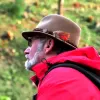
We Are Bankrupting Our Future
Lyle Laverty’s June 8 testimony before the House Subcommittee on Federal Lands, which begins on Page 2 of our Colorado Report, contains a remarkably candid five-word statement: “We are bankrupting our future.”
Few foresters in history have held leadership positions in both the U.S. Forest Service and the U.S. Department of the Interior, but the now retired Mr. Laverty has, so he knows whereof he speaks.
The bar graph on the cover of his testimony, which we assembled for him from Forest Service data, illustrates his testimony as nothing else could. It quantifies the slow motion ecological collapse of National Forests in California, our largest western state.
Mr. Laverty told essentially the same story in March testimony before a Colorado joint House-Senate Agricultural Committee that deals with natural resource and energy issues in the Centennial State.
We urge you to study the list of reasons Mr. Laverty enumerates as reasons for ecological collapse in every National Forest in the West. We have been following the story he tells for 28 years – long enough to have watched some 90 million acres turn brown, then gray.
Our first report – published in the spring of 1989 – was titled Gray Ghosts in the Blue Mountains. Like a canary in a coal mine, eastern Oregon’s “Blues” warned of what was about to happen in every National Forest in the West. And the result? Silence.
“Nature” is not going to fix what ails our National Forests. Nor are we going to fix it by allowing wildfires to do the work that Congress can’t seem to muster the courage to do.
If we had intended to use fire as a prescriptive tool – as some suggest we should do – we should have started when Earl Weaver, a Bureau of Indian Affairs forester – first suggested it in the early 1950s. Now it is too late to safely allow wildfires to roam the western landscape. There is too much at risk – including watersheds that provide some 80 percent of all domestic water consumed in the 11 western states, to say nothing of fish and wildlife habitat or the great wealth of year-round recreation opportunity western National Forests provide.
What are we to do? Mr. Laverty does a nice job of answering this question, but for those who won’t take the time to absorb his wisdom, there are too many trees in the West’s National Forests for the carrying capacity of the land. We have a lot of thinning work to do in dead and dying forests before we can safely leverage prescriptive fire’s benefits.
Herding big wildfires across large landscapes can help, but so-called “managed fire” can’t be risked anywhere near communities or critically important watersheds. So, we either do the necessary thinning work, or we let “nature” do it for us and accept the ecological consequences of fires that burn so hot and fast that they can incinerate birds in flight and transform the soil’s organic layer into a waxy surface that water cannot penetrate.
While you consider this choice, you might also want to ponder the meaning of the latest [2015] growth, mortality and harvest numbers for National Forests in California: Mortality exceeds net annual growth by a factor of two-plus, and harvest [of dead trees] by a factor of 10-plus.
We realize it is difficult to visualize 663,917,476 cubic feet of dead wood, so here is a little exercise you can complete next time you are at the Rose Bowl in Pasadena. Stack a row of one cubic foot blocks on the field, including end zones.
You will need 57,600 blocks to finish Row 1. Keep stacking until you’ve stacked 663,917,476 cubic feet on the field. Your completed stack will stretch 2.18 miles into the hopefully sunny New Year’s Day sky. Don’t forget to come back next year and do it again, because your 2.18-mile- high stack only represents what will die this year.
Surely you can now see why Mr. Laverty warns that we Americans are bankrupting our future by not insisting that Congress forcefully address ecological collapse in the West’s National Forests, including those in not so golden California.



